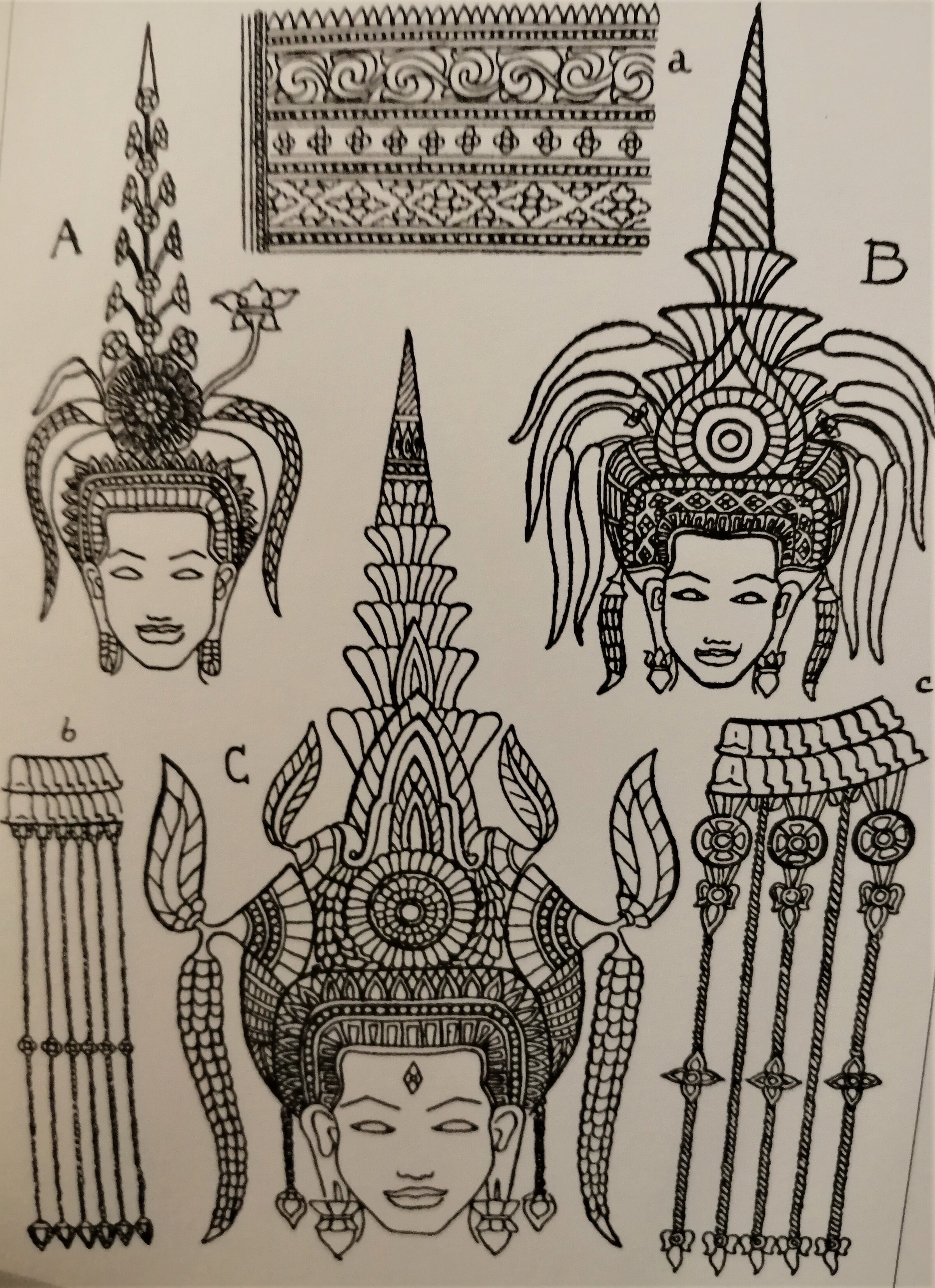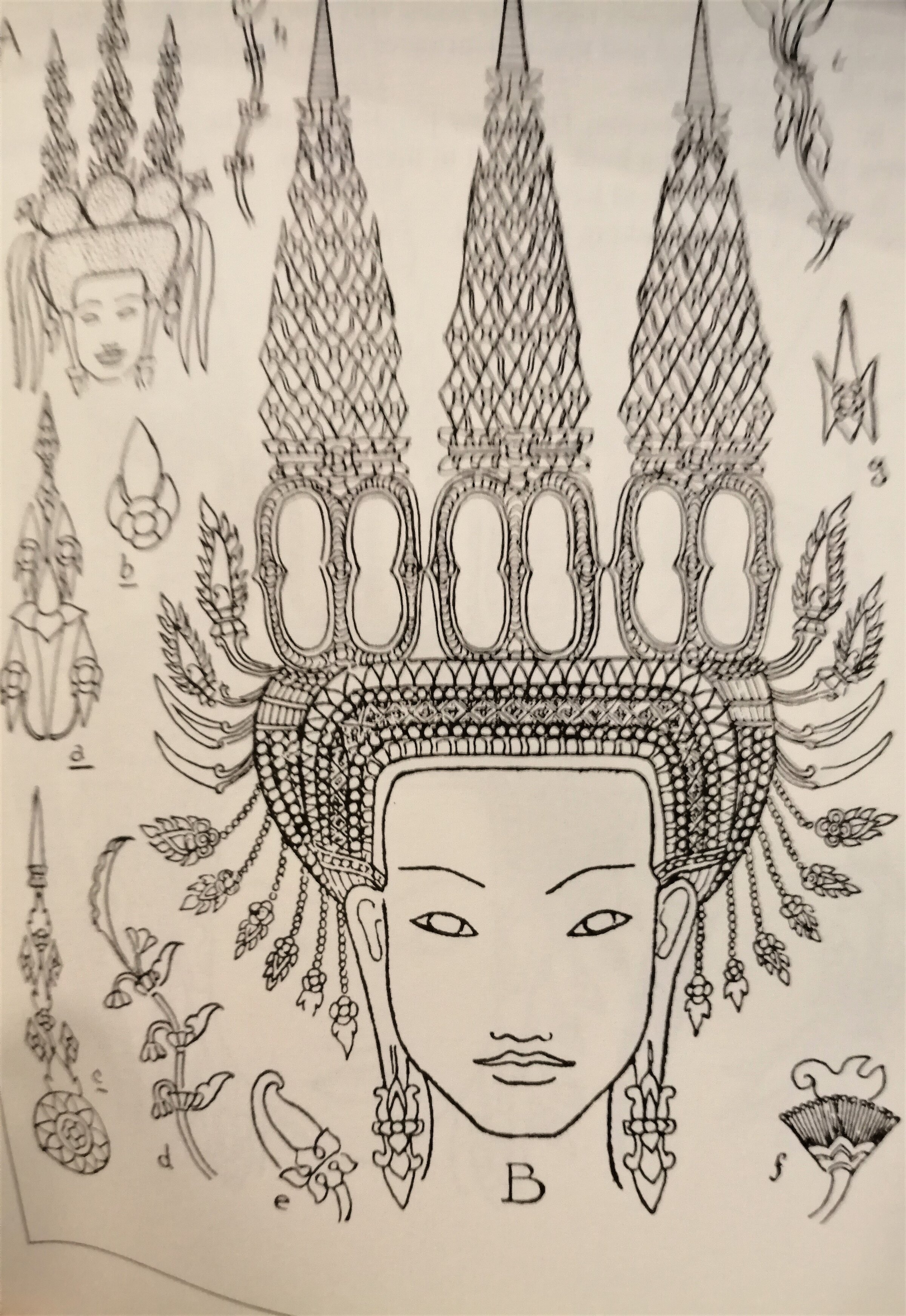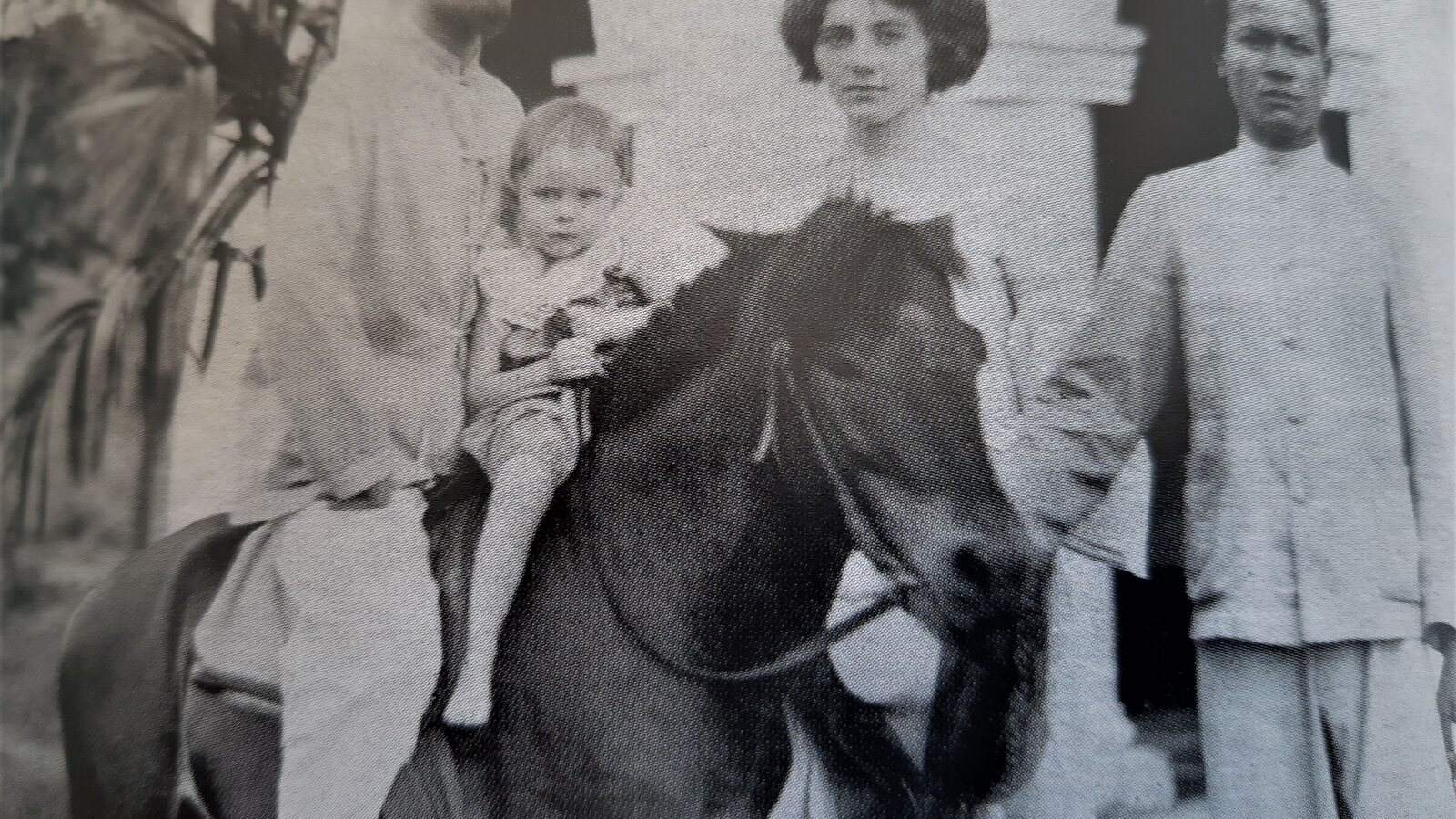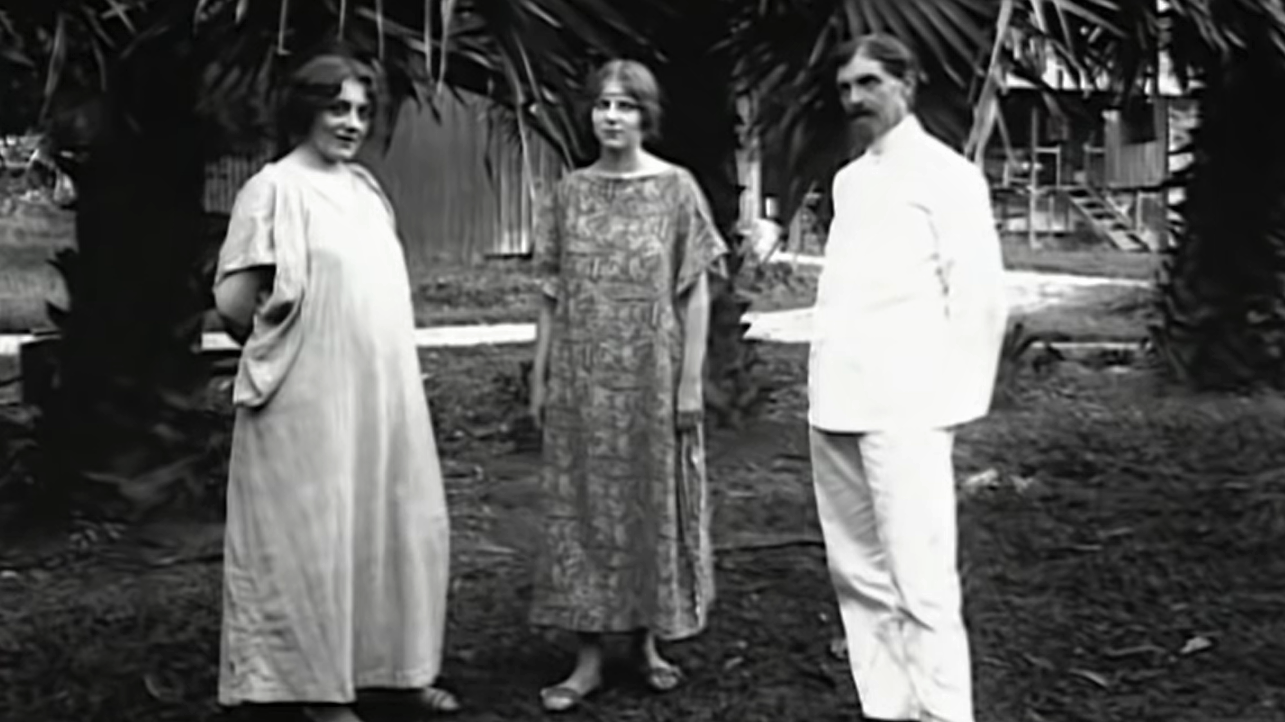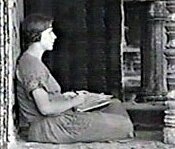Khmer Costumes and Ornaments of the Devatas of Angkor Wat
by Sappho Marchal
The first recension of female sculpted representations in Angkor, a timeless study in "Khmer elegance".
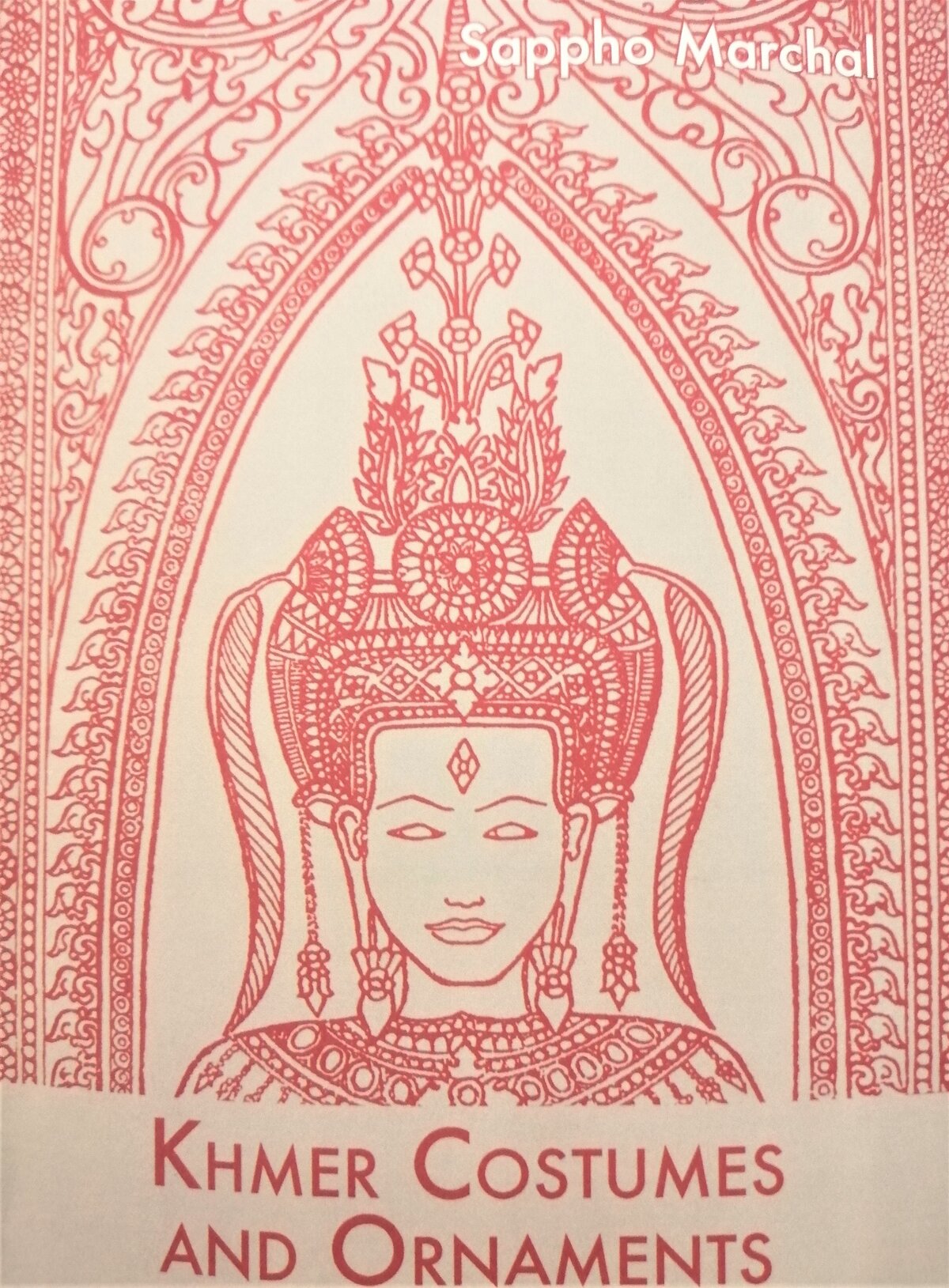
Type: paperback
Publisher: Orchid Press, Bangkok
Edition: English translation of the 1927 French edition, by Merrily P. Hansen. (#8 at Angkor Database Library)
Published: 2005
Author: Sappho Marchal
Pages: 189
Language : English
In a universe of male archeologists and researchers, Sappho Marchal, the unassuming and creative daughter of Henri Marchal, then Chief Conservator of Angkor Monuments, spent hours and days alone among the Khmer vestiges of a long-gone civilization.
The result is a stunning collection of 41 line drawing plates, annotated with erudition. Mokots (apsara’s crowns or tiaras), ankle and wrist bracelets, necklaces and scepters are minutiously rendered.
To quote Dr. Paul Cravath (University of Hawaii), in Angkor, “with stupendous variety, the Feminine achieved a new level of expression unsurpassed at any time in Asian sculpture.” But Sappho Marchal’s body of work is not just a mere celebration of sculpted beauty: published in 1927, her book contributed to the “Renaissance of Khmer arts” already initiated by George Groslier’s research and writings.
According to Michael Falser, a researcher in art forms during decolonization processes, George Groslier and Sappho Marchal’s works have helped to “re-Khmerize” classical dance and costume design in Cambodia, “re-establishing the ballet’s purified link to Angkor Wat bas-reliefs”. Falser is convinced that Queen Kossamak of Cambodia, in her committment to ensure a revival of the classical dance throught the “Apsara dance” style, drew inspiration from Sappho Marchal’s drawings.
- In his foreword, Angkor archeologist Victor Goloubew states that “Mademoiselle Marchal’s album will be an excellent source of inspiration for artists called upon to create stylish objects or decorative ensembles.”
- About the secret life of books: in his memoirs published in 2017, high-fashion hairstylist Nicolas Jurnjack explicitely mentions Sappho Marchal’s book as a direct source of inspiration for “Ancient-Khmer-style-inspired hair stylism”. During his 30-year long career, Nicolas Jurnjack has recently styled the manes of famous models Bella Hadid, Hailey Baldwin, Adriana Lima, Cindy Crawford, Gisele Bündchen, Claudia Schiffer, Naomi Campbell, Kate Moss, Georgia May Jagger, Stephanie Seymour, celebrities, singers and actors like Kristen Stewart, Alicia Keys, Léa Seydoux, Sienna Miller, Jennifer Lopez, Kirsten Dunst…(In The Hair, A fashion hair stylist’s journey of creativity, CSIPP, 496 pages)
- ADB Note: While Sappho Marchal’s work has been abundantly praised and commented all through the English-speaking world in the last decades, French academics and popularizers remain strangely mum about it. For instance, the English Wikipedia articles on Khmer classical dance and Apsaras quotes Marchal several times, while the French ones do not even mention her name.
About the Author
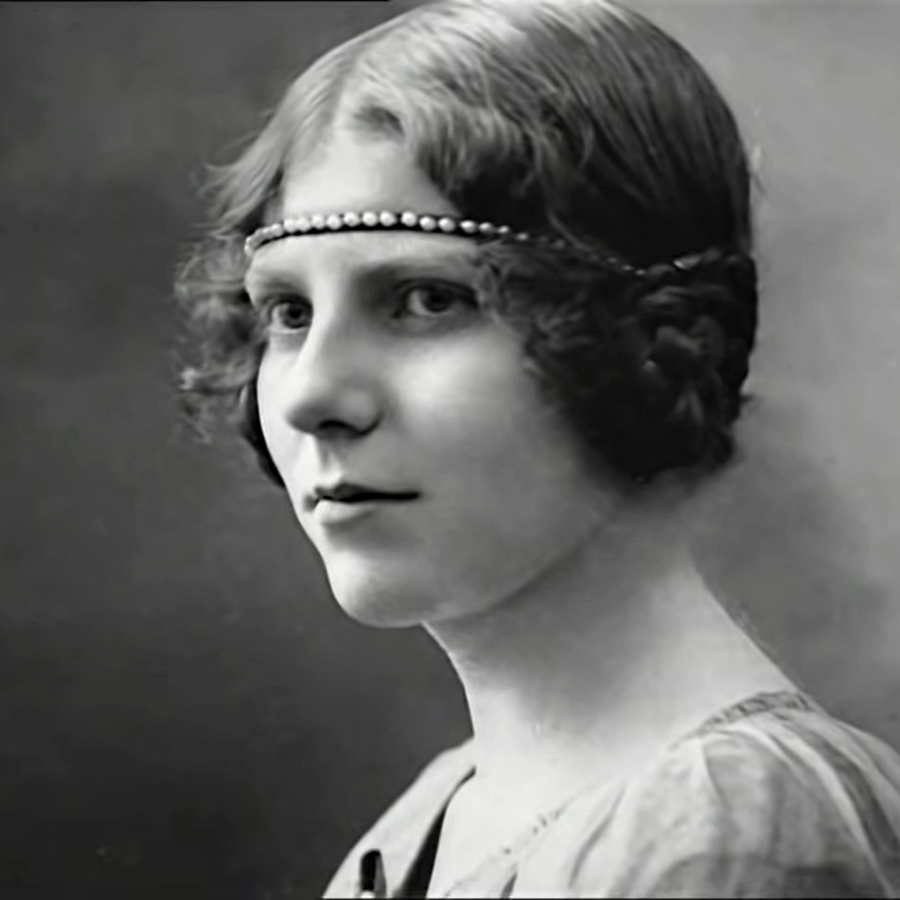
Sappho Marchal
Author and artist Sappho Marchal-Brébion (1904, Paris — 2000), the daughter of French archeologist and Angkor Wat Conservator Henri Marchal, was the first researcher to study, document in drawings and count the numerous female stone figures in Angkor Wat.
Sappho (sometimes spelled Sapho) Marchal came to Cambodia as a toddler, in 1905. She grew up in Siem Reap and on the archeological sites her father — appointed Angkor Conservator in 1916- supevervised. As a young artist, she illustrated many scientific articles published by Henri Marchal.
While capturing with her pen the slightest details of costumes and ornaments worn by devatas and apsaras around the Khmer temple complex, Sappho Marchal inventoried 1,737 female sculptures and carvings in Angkor, not far from the account of 1,796 established by Kent Davis seventy years later (probably because the young artist did not have access to the upper levels of the Angkorian towers).
At only 23 years of age, Sappho Marchal published a sum of her drawings and observations in Costumes et Parures khmèrs d’après les Devatâ d’Angkor-Vat (Paris, 1926, re-published in 1931). She also authored a collection of illustrations on Khmer traditional choreography for Samdech Thiounn’s book, Danses cambodgiennes (Editions d’Extreme Asie, Saigon, 1927). Both books, along with George Groslier’s own work, inspired Queen Kossamak of Cambodia when the Queen gave a new stimulus to the Royal Ballet traditions with the “Apsara Dance”.
Sappho Marchal with her parents, Henri and Mary, 1) circa 1907, 2) in 1920 [source: EFEO, in Henri Marchal: un architecte à Angkor, EFEO/Magellan, 2020]
On April 7, 1927, Sappho Marchal gave a lecture for the Revue des Arts Asiatiques members in Paris, La Danse au Cambodge, with a ‘démonstation choréographique’ by Nyota lnyoka [the Japanese founder of a ‘exotic dance school’ attended by Suzanne Meyer, daughter of Royal Ballet dancer Saramani and author Roland Meyer under the artist name Saramani] and film screenings. The Revue was to report (vol 4−2,1927, p 130) : “Devant la salle pleine, d’une voix tranquille, douce, et dont pas une syllabe n’était perdue, Mlle Marchal essaya de communiquer a son auditoire l’admiration et l’affection qu’elle éprouve pour Ies petites danseuses cambodgiennes et l’enthousiasme que lui inspire leurs danses. Nous regrettons d’être dans l’impossibilité de donner aujourd’hui le texte de cette conférence nourrie d’une très riche documentation, mais Mlle Marchal est repartie pour Angkor, et elle a emporte son manuscrit.” [In front of a full hall, in a quiet, gentle voice, not a syllable of which was lost, Miss Marchal tried to communicate to her audience the admiration and affection she feels for the little Cambodian dancers and the enthousiasm inspired by their dances. We regret not being able to give here the text of this conference, nurtured by a very rich documentation, but Miss Marchal has gone back to Angkor, and she has taken her manuscript with her.]
We know that she moved to France in 1928, and that her parents stayed with her there during the Second World War, from 1938. She was then known as S. Brébion-Marchal, possibly after marrying the son of journalist-researcher Antoine Brébion (1857−1917), author of a “Bibliographie des voyages dans l’Indochine francaise du IX au XIX eme siecle”. In the 1960s, Sappho came back to Cambodia in two occasions to pay visits to his father Henri Marchal, who had retired in his Khmer traditional house with his Cambodian companion, Neang Niv, near Wat Phu, Siem Reap.
1) Drawing in Angkor in the 1920s [source: devata.org]. 2) An etching by Sappho Marchal, 1924 [source: Les Pages Indochinoises, 15 April 1924, frontispiece].

